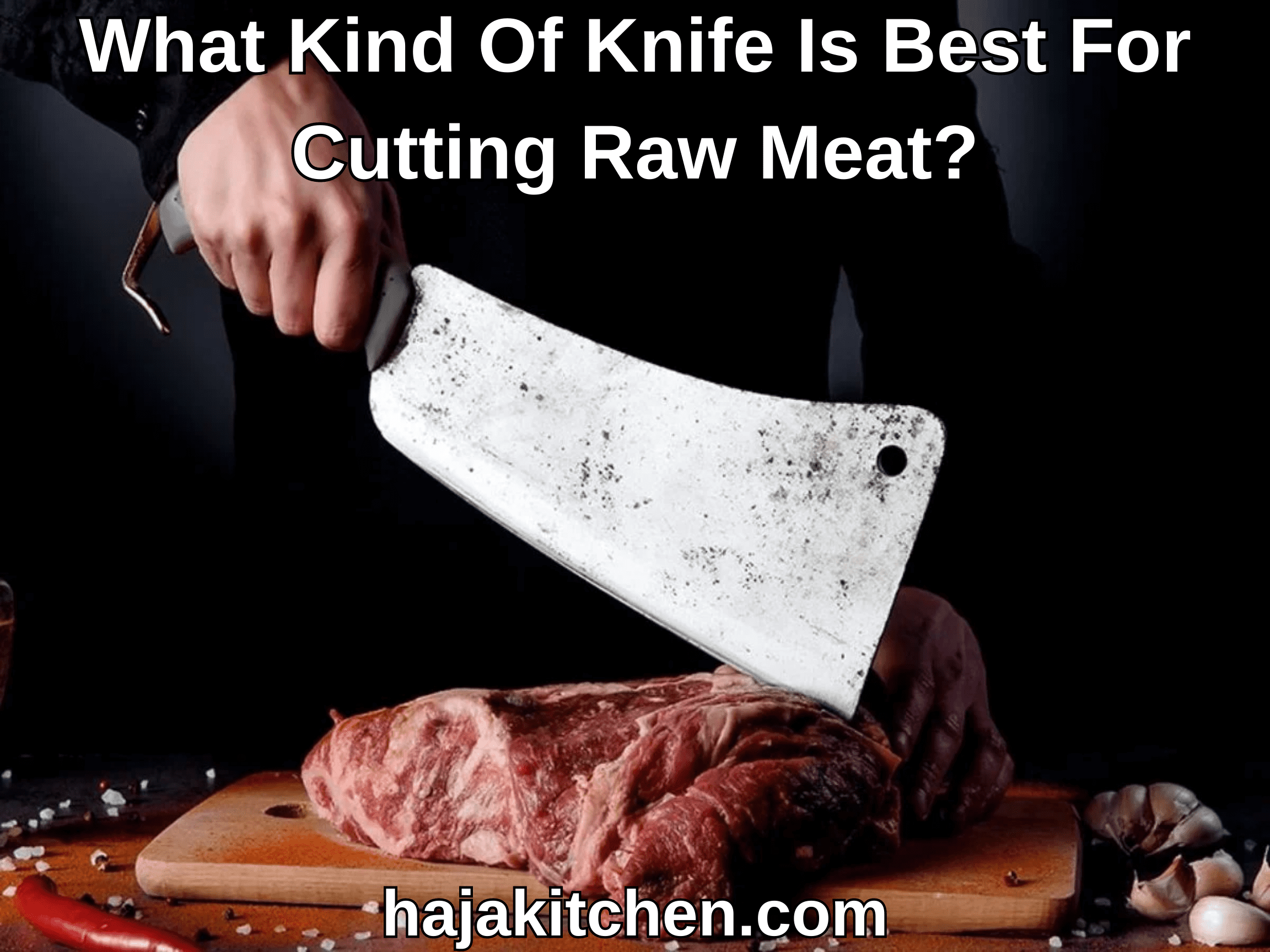When it comes to preparing and cooking raw meat, having the right knife can make all the difference. What is the best knife for cutting meat? Whether you’re an aspiring chef or a home cook, selecting the best knife for cutting raw meat is essential for achieving precise cuts, ensuring food safety, and enhancing the overall cooking experience. In this article – What Kind Of Knife Is Best For Cutting Raw Meat, we will explore the key factors to consider and the various types of knives that excel in cutting raw meat, empowering you to make an informed decision for your culinary endeavors.
What is the best way to cut raw meat with a Knife?
The best kitchen knives are not just for chefs. A good butcher’s knife can be used to cut meat and one with a longer, curved blade is perfect when you want more control over your cuts. When cutting raw meat with a knife, it’s important to follow proper techniques to ensure safety and achieve desired results. Please note that a utility knife is not a good knife for cutting raw meat.
Steps for Safe and Effective Cutting of Raw Meat
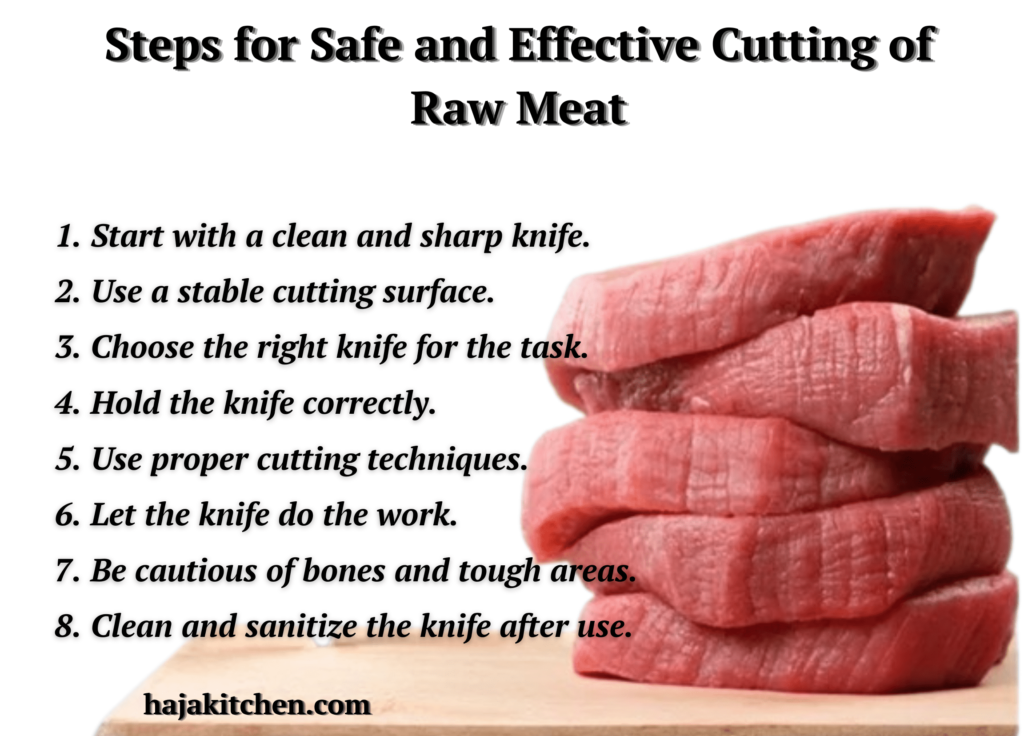
- Start with a clean and sharp knife: Before you begin, make sure your knife is clean and properly sharpened. A sharp knife will make the cutting process easier and safer.
- Use a stable cutting surface: Place a sturdy cutting board or surface that won’t slip or move while you’re cutting. This will provide stability and prevent accidents.
- Choose the right knife for the task: Select a knife appropriate for the cut of meat you’re working with. For example, a chef’s knife or a boning knife is commonly used for different purposes.
- Hold the knife correctly: Hold the knife with a firm grip, wrapping your fingers around the handle while keeping your thumb on the side of the blade for control. This grip provides stability and maneuverability.
- Use proper cutting techniques: When cutting, use a gentle rocking motion or a slicing motion with the knife, depending on the desired cut. Avoid applying excessive force or sawing motions, as they can lead to uneven cuts or accidents.
- Let the knife do the work: Allow the sharpness of the knife to guide the cutting process. Apply steady and controlled pressure, letting the knife glide through the meat without forcing it.
- Be cautious of bones and tough areas: When encountering bones or tougher sections of meat, use a boning knife or a cleaver to navigate around them. Apply careful and controlled force to separate or remove them as needed.
- Clean and sanitize the knife: After cutting raw meat, immediately clean the knife with warm, soapy water to remove any traces of meat and bacteria. Properly sanitize and dry the knife before storing it.
I hope, that information above is clear and understandable for you and you now know how to cut raw meat.
Best Types of Knives for Cutting Raw Meat
Finally, we can show you what type of knife to cut meat exists and is better for your tasks.
Chef’s Knife
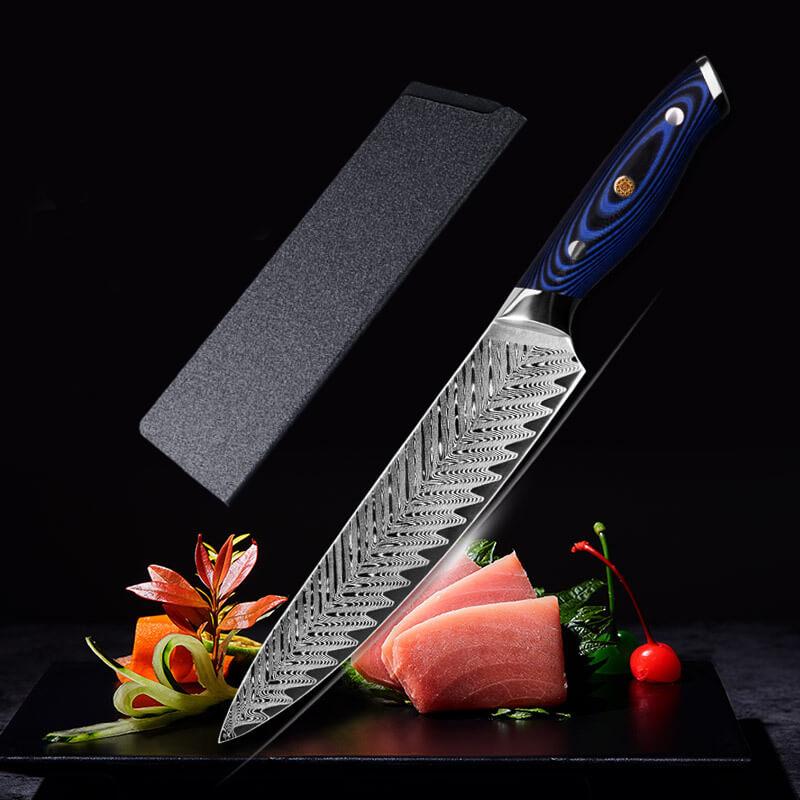
A chef’s knife is a versatile and essential tool in the kitchen. It typically has a broad and curved blade, ranging from 6 to 12 inches in length. The curved edge allows for a rocking motion while cutting, making it ideal for chopping, mincing, slicing, and dicing various ingredients, including meat, vegetables, and herbs. It provides excellent control and precision, and its weight and balance make it comfortable to handle. A chef’s knife is a go-to option for many professional and home cooks due to its versatility and all-purpose functionality.
Boning Knife
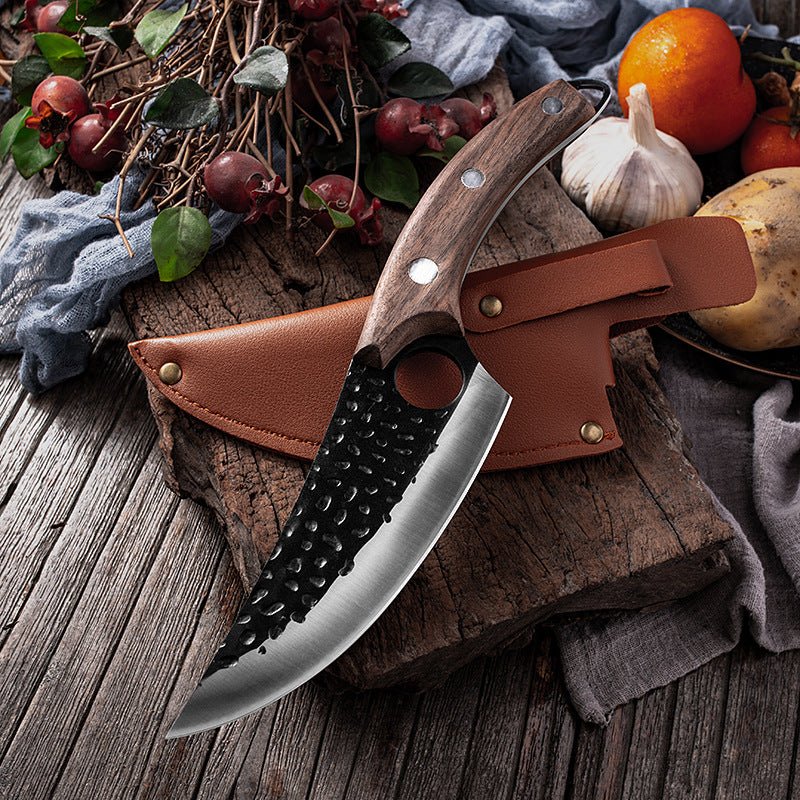
A boning knife is specifically designed for separating meat from bones. It has a narrow and pointed blade, usually between 5 to 7 inches long, which allows for precise and controlled maneuvering around bones, joints, and cartilage. The sharp and flexible blade enables the user to navigate through intricate cuts, such as deboning poultry, filleting fish, or trimming fat from meat. Boning knives come in various styles, including stiff, flexible, or semi-flexible, allowing for different cutting techniques depending on the specific task, so it’s good meat cutting knife.
Cleaver
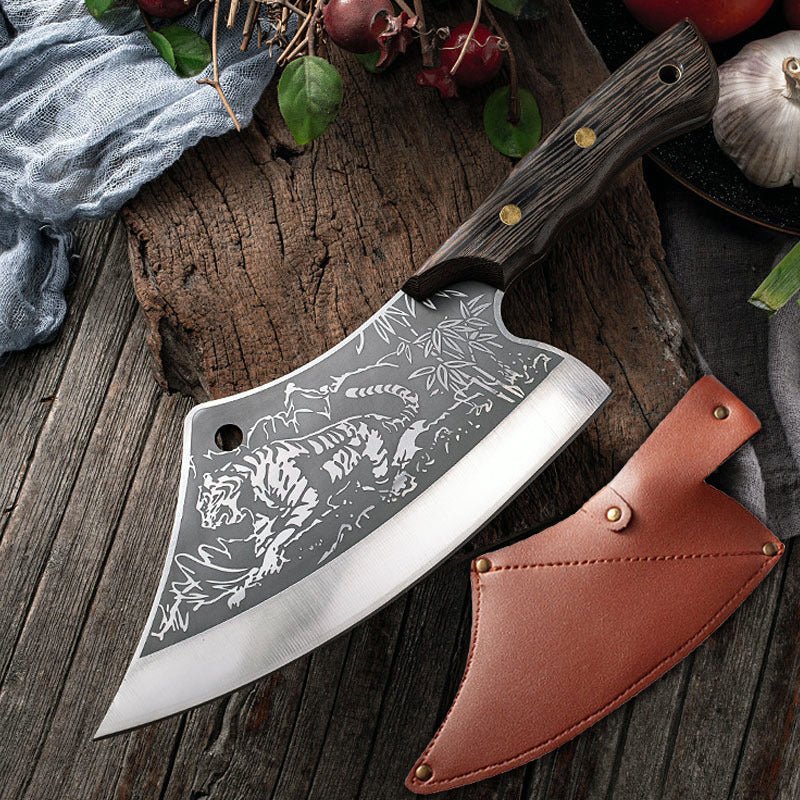
A cleaver is a heavy and robust knife with a thick and rectangular blade. It is primarily used for tasks that require significant force, such as splitting bones, breaking down larger cuts of meat, or chopping through tough ingredients. The weight and thickness of the blade allow for efficient cutting through dense and hard materials, while the broad surface can be used for smashing garlic cloves or transferring ingredients from the cutting board to the cooking pot. Cleavers often have a sturdy and comfortable handle, providing control and stability during heavy-duty cutting tasks, so it’s best knife for meat cutting.
Slicing Knife

A slicing knife, also known as a carving knife, features a long, narrow, and thin blade, typically around 8 to 14 inches in length. It is specifically designed for precision slicing of cooked meats, such as roasts, hams, or poultry. The thin and sharp blade allows for smooth and effortless slicing, creating thin and even slices with minimal tearing or shredding. The length of the blade enables long and uninterrupted strokes, ensuring clean cuts and preserving the integrity of the meat. Slicing knives are essential for achieving professional-looking slices for presentations or when serving meat at the table.
It’s important to note that the specific knife you choose for cutting raw meat should be sharp, comfortable to hold, and made from high-quality materials. Additionally, practicing proper food safety and sanitation measures, such as regular knife cleaning and avoiding cross-contamination, is crucial when working with raw meat.
Different Cutting Techniques for Raw Meat
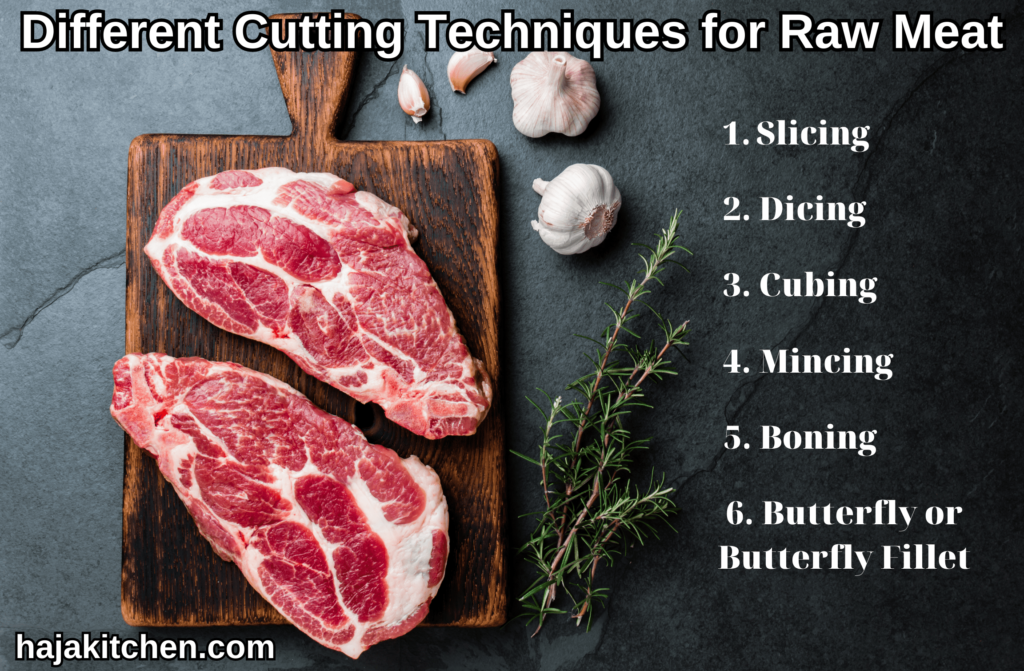
Slicing
:max_bytes(150000):strip_icc()/simple-grilled-tri-tip-steak-336383_Final-5bc6483446e0fb005161e412.jpg)
Slicing involves making long, smooth cuts through the meat, typically in a horizontal motion. This technique is commonly used for cuts like steaks, roasts, or fillets. Hold the knife at a slight angle and use a sawing motion to create even slices.
Dicing

Dicing is used when you need to cut the meat into small, cube-shaped pieces. Start by slicing the meat into long strips, then stack the strips and cut them crosswise into cubes. Maintain a steady grip on the knife and use a rocking motion to make precise cuts.
Cubing
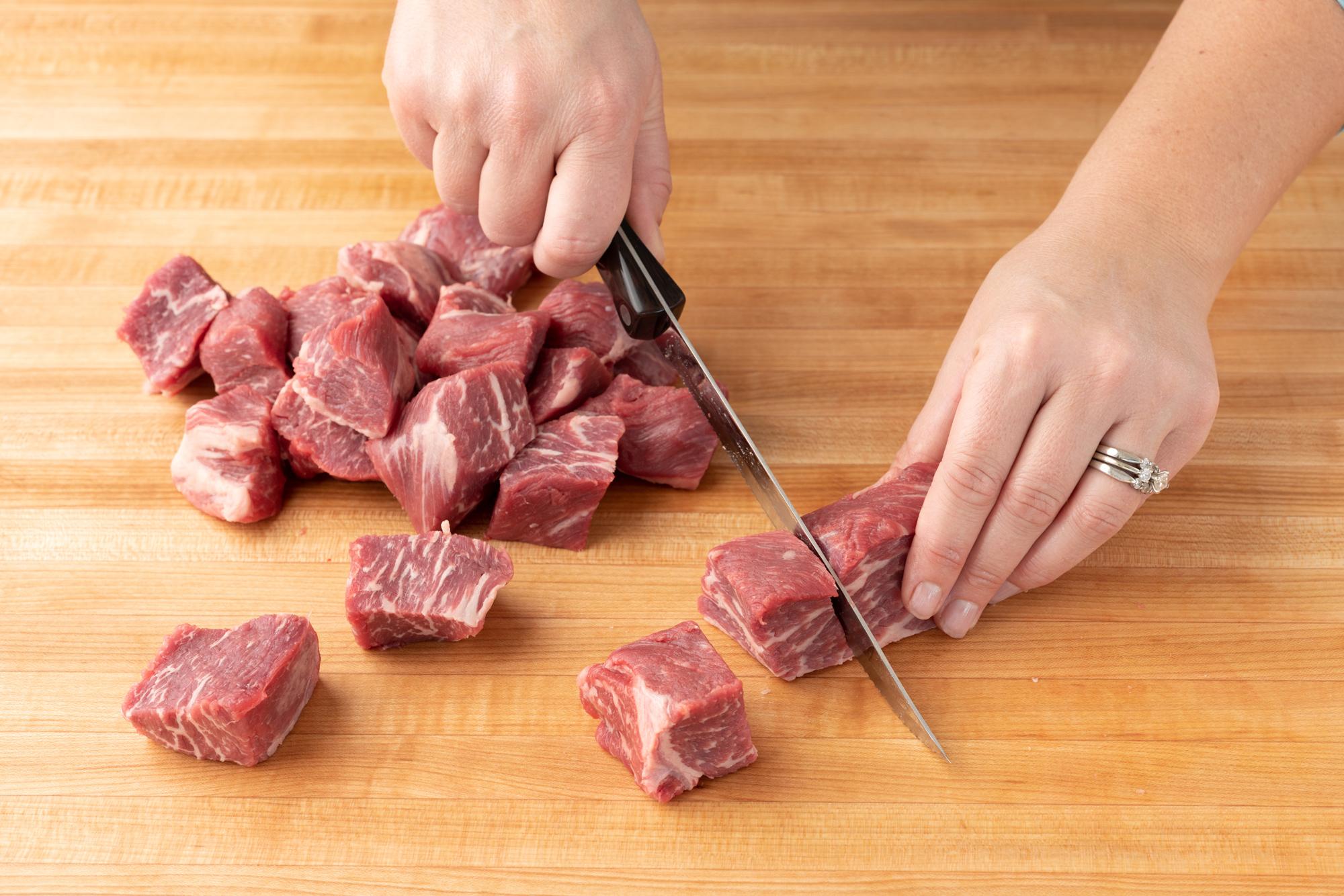
Cubing is similar to dicing, but the resulting pieces are larger. It’s commonly used for stews, kebabs, or stir-fries. Begin by cutting the meat into thick slices, then cut those slices into smaller cubes, ensuring each piece is roughly the same size.
Mincing

Mincing involves cutting the meat into very fine pieces. It’s often used for ground meat or recipes that require finely chopped meat. Hold the knife with a firm grip and use a rocking motion, moving the knife back and forth while applying downward pressure to finely chop the meat.
Butterfly or Butterfly Fillet
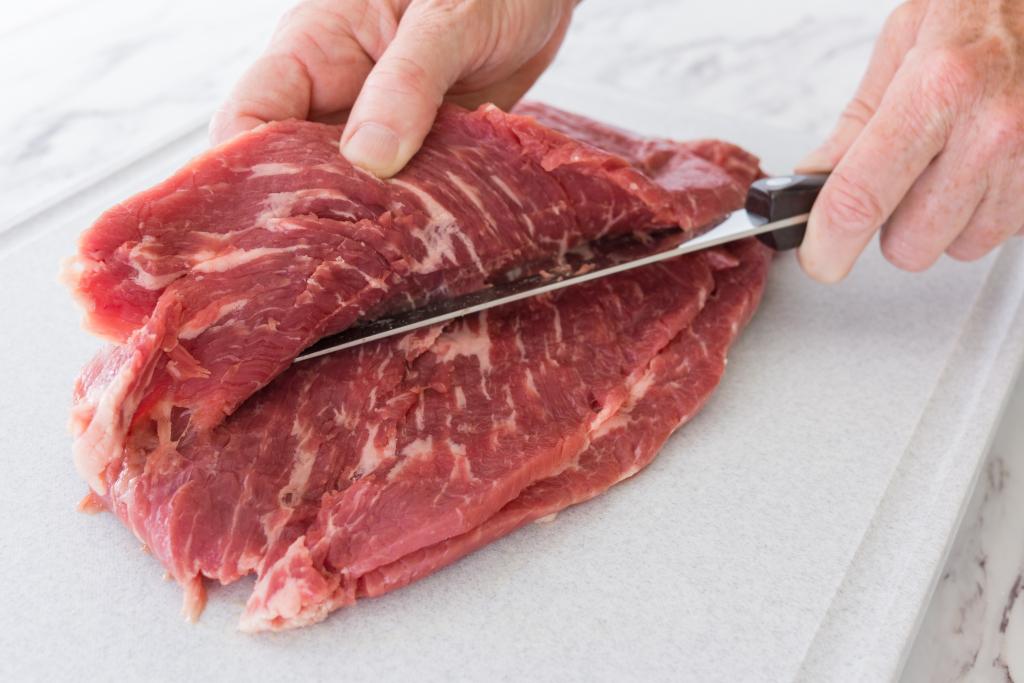
This technique is used to create a thinner, more even piece of meat, such as chicken breasts or fish fillets. Start by making a horizontal cut along one side of the meat, stopping just short of the other side. Open up the meat like a book and flatten it with gentle pressure.
Boning

Boning is the process of removing bones from meat, commonly done with a boning knife. Carefully maneuver the knife along the bone, using a combination of slicing, trimming, and separating techniques to remove the bone while minimizing meat wastage.
Conclusion
When it comes to cutting raw meat, selecting the right knife is essential for achieving professional-level results and ensuring safety in the kitchen. Each type of knife mentioned above offers unique features and benefits that cater to specific cutting requirements, also in the market you can find electric knife for cutting frozen meat , they are good also. Consider factors such as blade sharpness, grip comfort, and the type of meat you frequently work with to make an informed decision. By equipping yourself with the appropriate knife, you’ll enhance your culinary skills and create delectable meat dishes with confidence and precision.
FaQ
Is it possible To cut raw meat with an Electric Knife?
A great chef’s knife is essential for most tasks in the kitchen, but if you have large cuts of meat or bread that need slicing quickly an electric knife can really come through.
What is the best way to use an electric knife?
To avoid difficult cuts, make sure you push the electric knife through frozen meat. You can also use a small amount of pressure and guide it down while running for easier results.
Is it possible to cut through frozen meat with a knife?
Cutting through frozen meat can be difficult, but if you have an extra minute or two then it’s worth taking the time to soften your blade before cutting. You’ll need either an electric knife (which works well) and/or a heavy-duty saw like this one which has blades made out of hardwearing steel with teeth designed for easy Removal Of Fatty Matter When Cleaning And Protecting Your Kitchen Knife slices right into tough stubborn pieces no matter how far away they are on either side.
How do you cut frozen meat with the best knife?
The butcher’s knife is the best frozen meat knife, given its versatility and heftiness. But remember: always be careful when trying to cut frozen foods; if you cannot safely do so without damaging it or yourself in some other way (for example by slipping), then don’t waste your time.
Raw meat can be cut with an electric knife?
In conclusion, it can be said that if you have the right electric knife, you will be able to cut your Thanksgiving turkey and vegetables with the same ease as well as perform precision tasks, such as slicing bread or filleting fish, with the same ease as well.
Is it possible to cut through frozen meat with an electric knife?
Yes, it is possible to cut through frozen meat with an electric knife. Electric knives are designed with powerful motors and serrated blades that can handle tougher cutting tasks, including slicing through frozen meat. However, it’s important to note that cutting frozen meat can be more challenging and may require more effort compared to cutting thawed or room temperature meat. It’s advisable to follow the manufacturer’s instructions and use caution when cutting through frozen meat to avoid any potential accidents or damage to the knife. Additionally, allowing the frozen meat to partially thaw before cutting may make the process easier and yield better results.
What is the best way to cut meat with an electric knife?
The benefits of using plastic for raw meat are that it can go in the dishwasher and has a nonporous surface. The drawbacks include being less able to sanitize, especially if you have wooden cutting boards like bamboo ones which aren’t as susceptible but still need some sort of protection against bacteria growth due diligence.
Can you recommend best electric knife for cutting frozen meat?
One highly recommended electric knife for cutting frozen meat is the Cuisinart CEK-40 Electric Knife. It is known for its powerful motor and sharp blades that can easily cut through frozen meat with precision.
The knife features a comfortable ergonomic handle and comes with two interchangeable stainless steel blades, one for carving and one for bread slicing. Its corded design ensures consistent power supply, allowing for efficient cutting. Additionally, the knife has a safety lock feature for added security. Overall, the Cuisinart CEK-40 Electric Knife is a top choice for cutting frozen meat knife due to its performance, durability, and ease of use.

